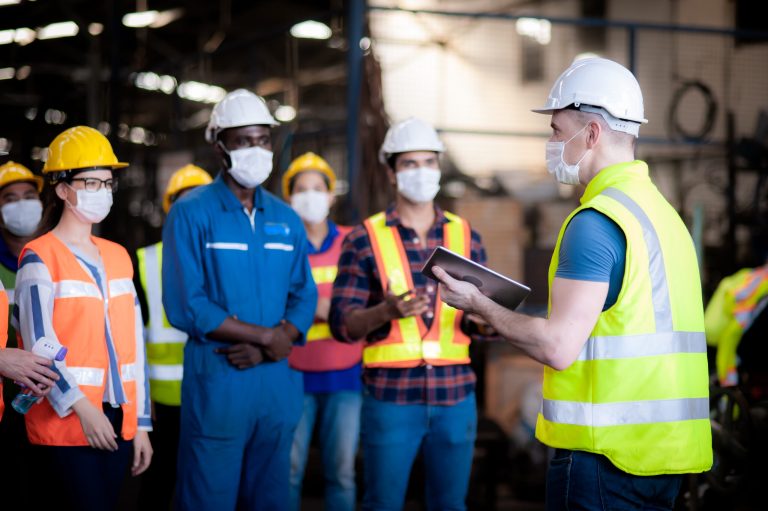Warehouses can be dangerous, but they are becoming safer. Much of this improvement stems from new technologies, with automation leading the charge.
Automated facilities are much safer than traditional operations in several ways. At the same time, robots present unique risks that warehouses must confront. In both cases, technological innovation is the perfect solution for better safety.
Automation as a safety measure
Warehouse automation has historically lagged behind other heavy industries like manufacturing, but that is starting to change. more 70% of logistics business Use some form of mobile robot today. This transformation improves safety along two main lines: automating dangerous tasks and reducing errors.
Automate dangerous tasks
The most important safety benefit of automation is that it keeps workers away from the most dangerous parts of the job. When human employees do not need to carry the heaviest loads or reach the highest shelves, it has the same effect as if these risks did not exist.
Automation cannot perform all the tasks that a human can, but the most risky work is often easily automated. Carrying heavy loads or picking up items from high shelves are straightforward and predictable tasks – the kind at which automation excels.
Automated tasks don't have to be dangerous to improve workplace safety. Burnout accounts for 23% of all work-related injuries It often stems from repetitive movement. Warehouses that automate material handling workflows reduce this movement, preventing one of the most common causes of injury.
Reduce error
Automated warehouses are also safer because they reduce the risks associated with human errors. Errors play a role Almost all workplace safety incidentsSo companies that reduce errors will also reduce injuries.
Autonomous alternatives to manually operated machines are making some of the biggest impacts in this field. For example, conventional forklifts pose serious threats due to the potential for driver error, as humans are easily distracted. By contrast, robotic forklifts don't feel busy or bored, so they're less likely to make mistakes that put nearby workers at risk.
It is also worth noting that automation reduces the workload in warehouses suffering from labor pressures. Workers can feel less stressed when there is less to do, allowing them to focus on what they are doing, preventing dangerous mistakes.
Keeping workers safe from robots
Of course, automation itself can introduce new risks in the workplace. The answer to these risks is not to avoid automation, but to implement new technologies that make it safer.
Reliable navigation
One of the most important steps to improving robot safety is ensuring that they can navigate reliably. Transporting equipment such as forklifts Responsible for numerous injuries and OSHA violationsMobile robots pose many of the same risks. An automated guided vehicle (AGV) that cannot quickly and accurately identify obstacles and pedestrians can cause harmful collisions.
Cameras and machine vision software are improving, making mobile robots safer by default. Along with these improvements, warehouses can leverage the Internet of Things (IoT) to enable better mobility. Robots that communicate with real-time sensors throughout a facility can move through them more effectively.
Edge computing takes these benefits further, distributing complex computing tasks between nearby devices, enabling faster responses. 5G networks can also provide greater bandwidth and faster speeds to support these operations.
Adaptable robots
Collaborative robots (collaborative robots) are another important technology that makes automated warehouses safer. These robots are designed to work alongside humans rather than replace them. As such, they are less likely to collide with workers or cause disturbances that could lead to injury.
Adaptability is a key trait here. Collaborative robots can respond to data in real-time, often through an Internet of Things connection. As a result, they can adjust their workflow as necessary as conditions change to prevent mistakes that could put workers at risk or get out of the way of people even when they are not following predictable paths.
Amazon has implemented collaborative robots at scale to impressive results. One of its solutions, Sequoia, combines multiple robotic systems to organize and move inventory throughout the warehouse. Combining separate systems allows it to adapt as needed, and emphasizes the design to make things easier for human operators. as a result of, Recordable incident rates decreased by 15% Between 2021 and 2022.
artificial intelligence
It is impossible to talk about revolutionary technologies without mentioning artificial intelligence. AI can improve the safety of robotics in warehouses in many ways, and its potential is likely to grow as this technology advances.
AI-guided robots are more adaptable than classical alternatives, making them safer. Machine learning models can identify and respond to hazards in a fraction of a second, making them ideal for guided mobile robots to prevent collisions. Likewise, AI can help robots interpret situations to determine the best course of action to stay productive and keep human co-workers safe.
AI can also analyze data from across the warehouse to determine where the most incidents occur. Some models can go further and suggest potential improvements, making it easier to effectively reduce workplace injuries over time.
New technology is transforming warehouse safety
Technology is one of a warehouse's greatest assets when addressing worker safety. The logistics and supply chain industries will become more secure as more facilities embrace automation and complementary technologies.
Adopting technology is not a silver bullet for all workplace safety issues, but it offers significant improvements. Warehouse managers must integrate these solutions into existing safety programs and combine them with other steps to become as safe as possible.

